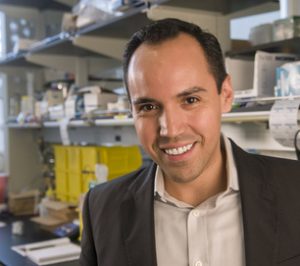Events
Materials Design for Third Generation Singlet Fission Solar Cells
May 17, 2018 at 3pm/Pfizer Lecture Hall- Harvard University
Luis Campos
Department of Chemistry, Columbia University

Organic materials offer a rich palate to be decorated with functional units in order to tune various properties. For example, the ability to generate multiple excitons from a single photon (singlet fission in molecular materials) has the potential to significantly enhance the photocurrent in single-junction solar cells, and thus raise the power conversion efficiency from the Shockley–Queisser limit of 33% to 44%. However, there is a paucity of materials that undergo efficient singlet fission. Our group is interested in designing building blocks that are capable of generating triplet pairs in modular small molecules and polymers. This talk will provide an overview on our approach to the design, synthesis, and evaluation of the materials.
Luis M. Campos is an Associate Professor in the Department of Chemistry at Columbia University. He was born in Guadalajara, Mexico, and moved at the age of 11 to Los Angeles, California. He received a B.Sc. in Chemistry from CSU Dominguez Hills in 2001, and a Ph.D. from the Department of Chemistry & Biochemistry at UCLA in 2006 working under the supervision of M. A. Garcia-Garibay and K. N. Houk. At UCLA, he was awarded the NSF Predoctoral Fellowship, Paul & Daisy Soros Fellowship, and the Saul & Silvia Winstein Award for his graduate research in solid-state photochemistry. Switching to materials chemistry, he went to UCSB as a UC President’s Postdoctoral Fellow to work under the supervision of C. J. Hawker at the Materials Research Laboratory. At Columbia, his group’s research interests lie in polymer chemistry, self-assembly, and organic electronic materials.






